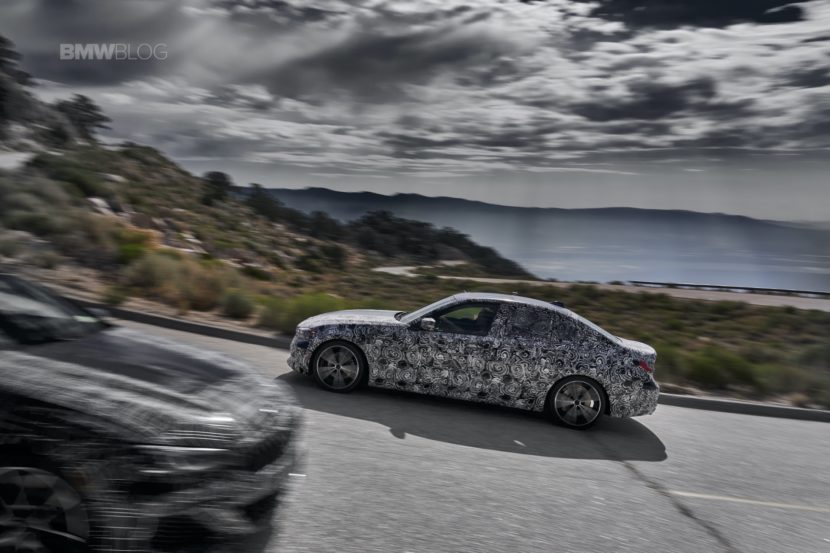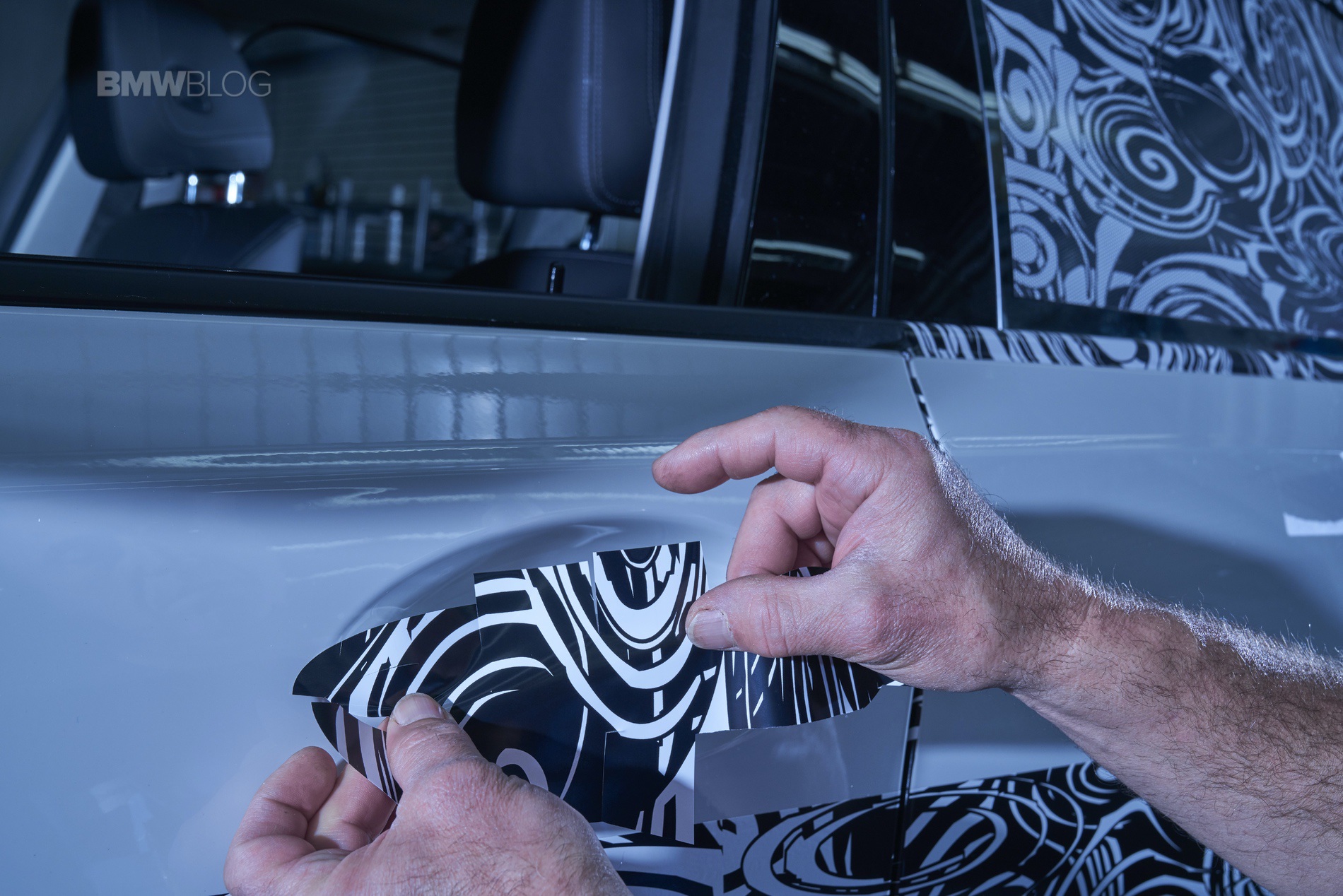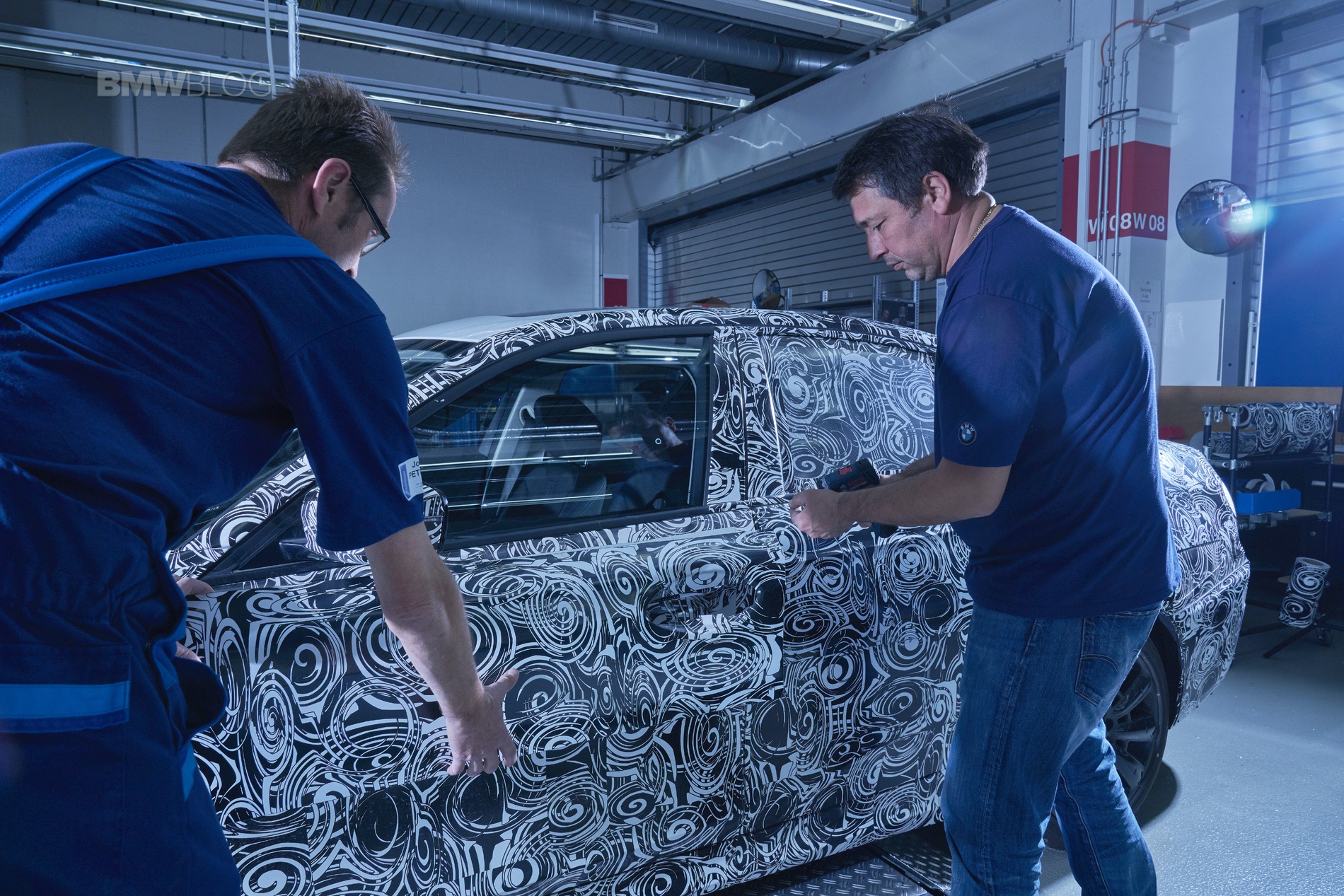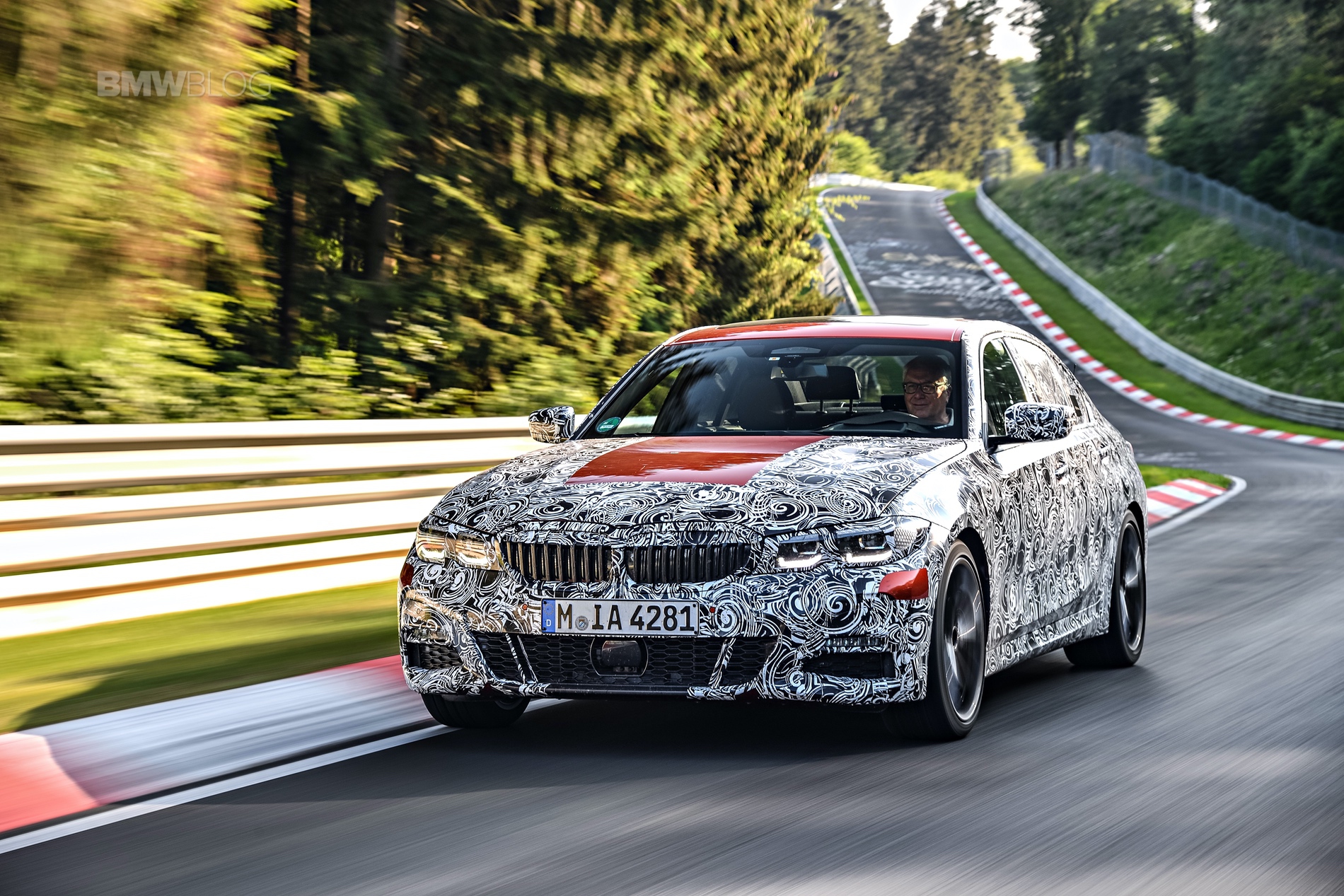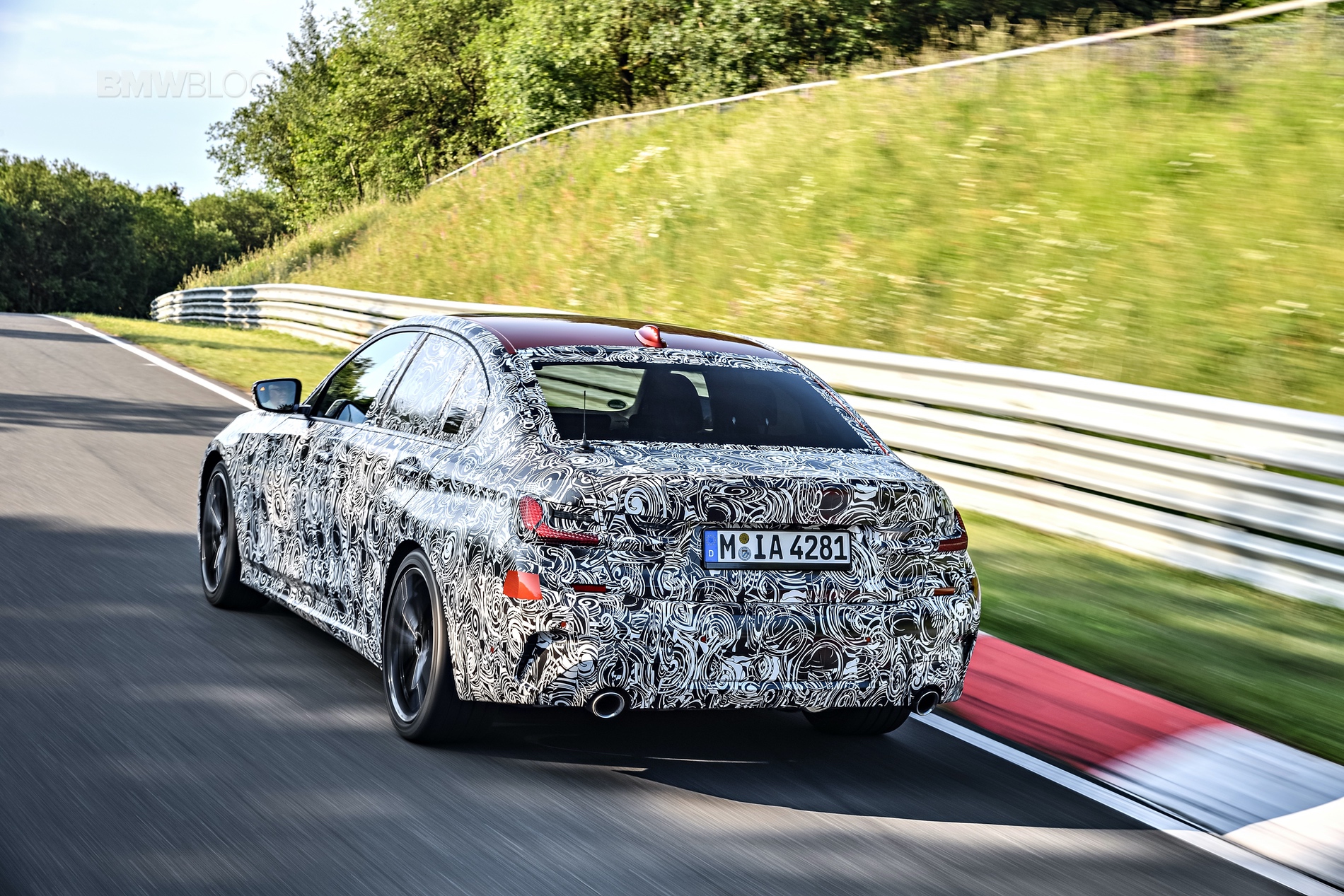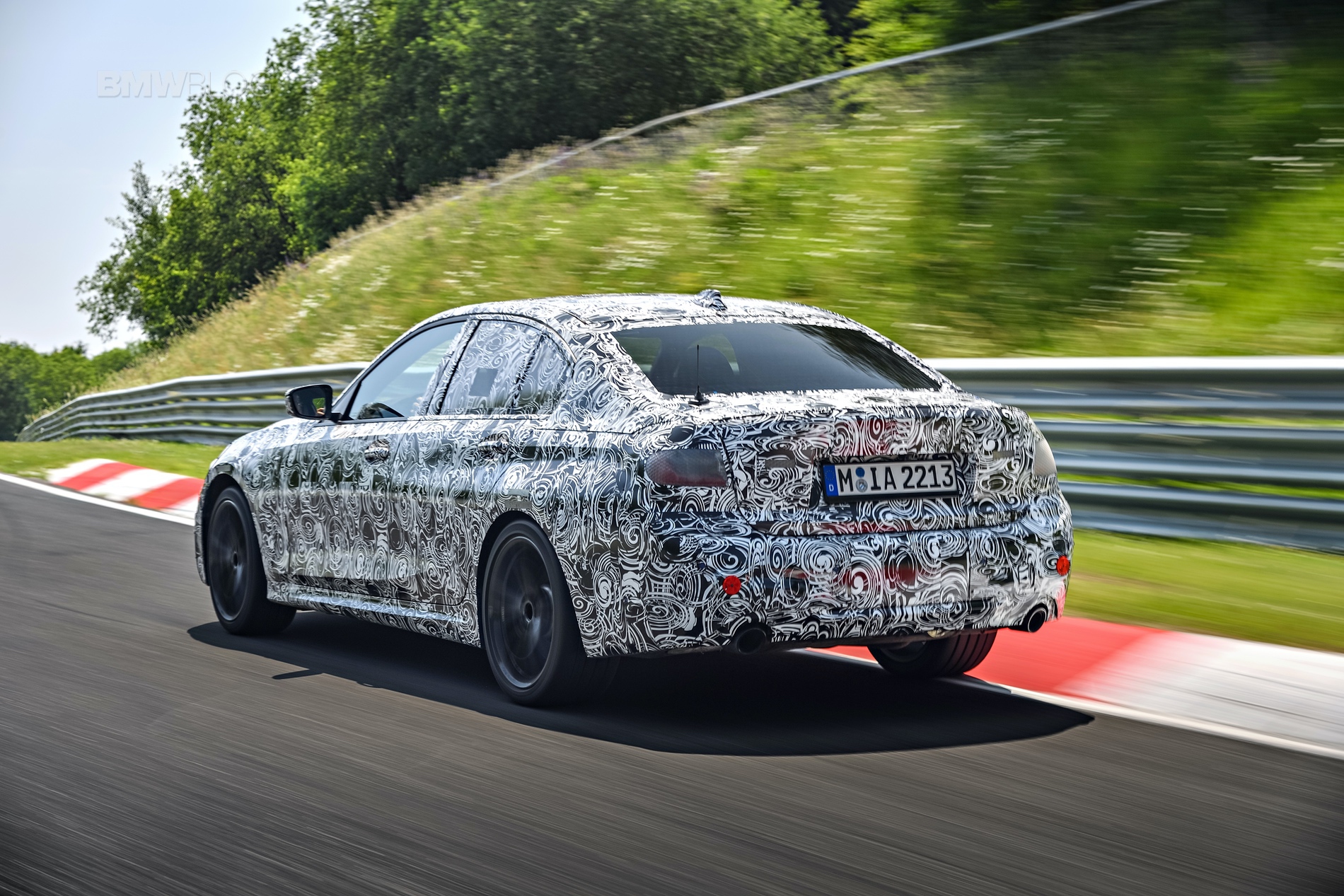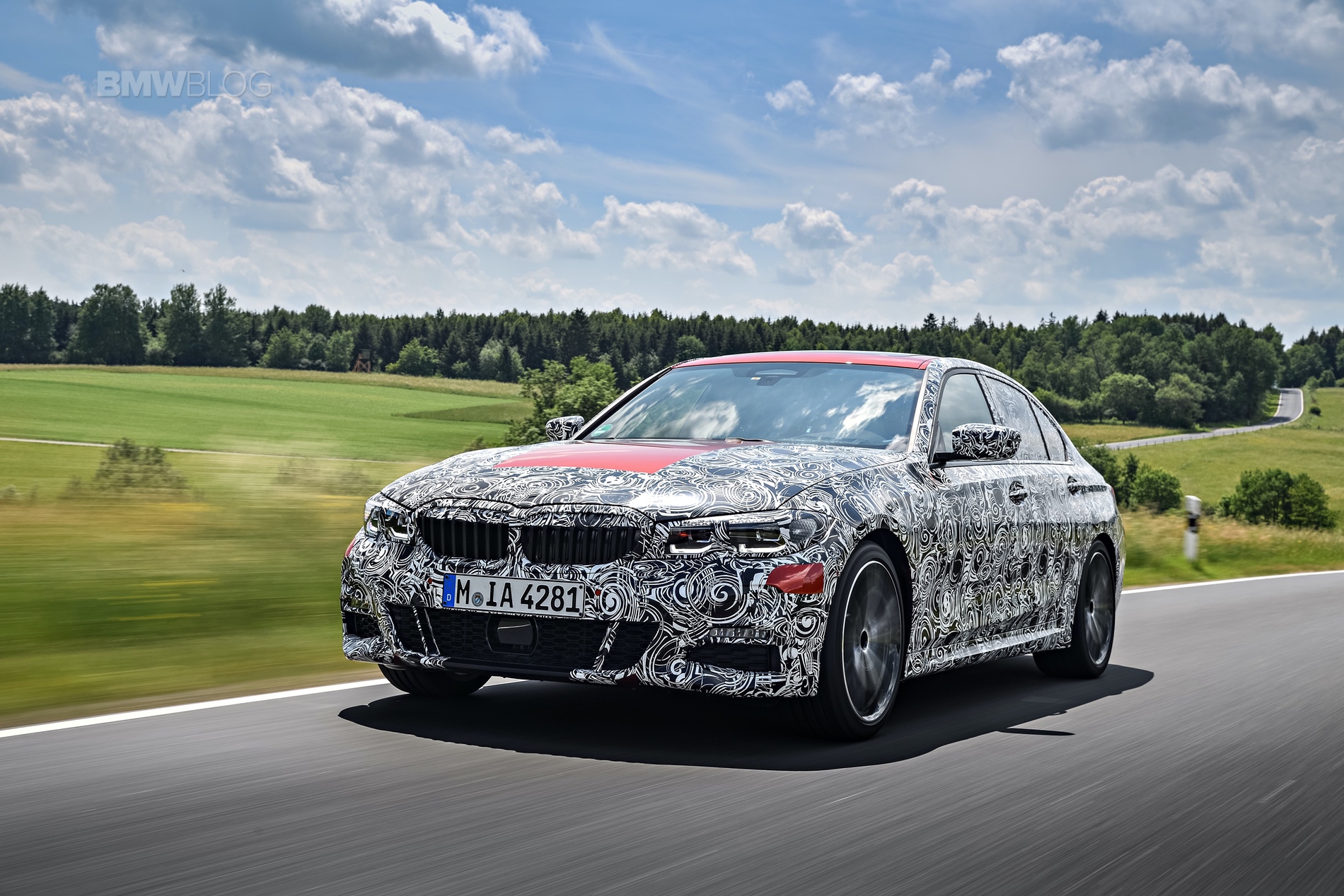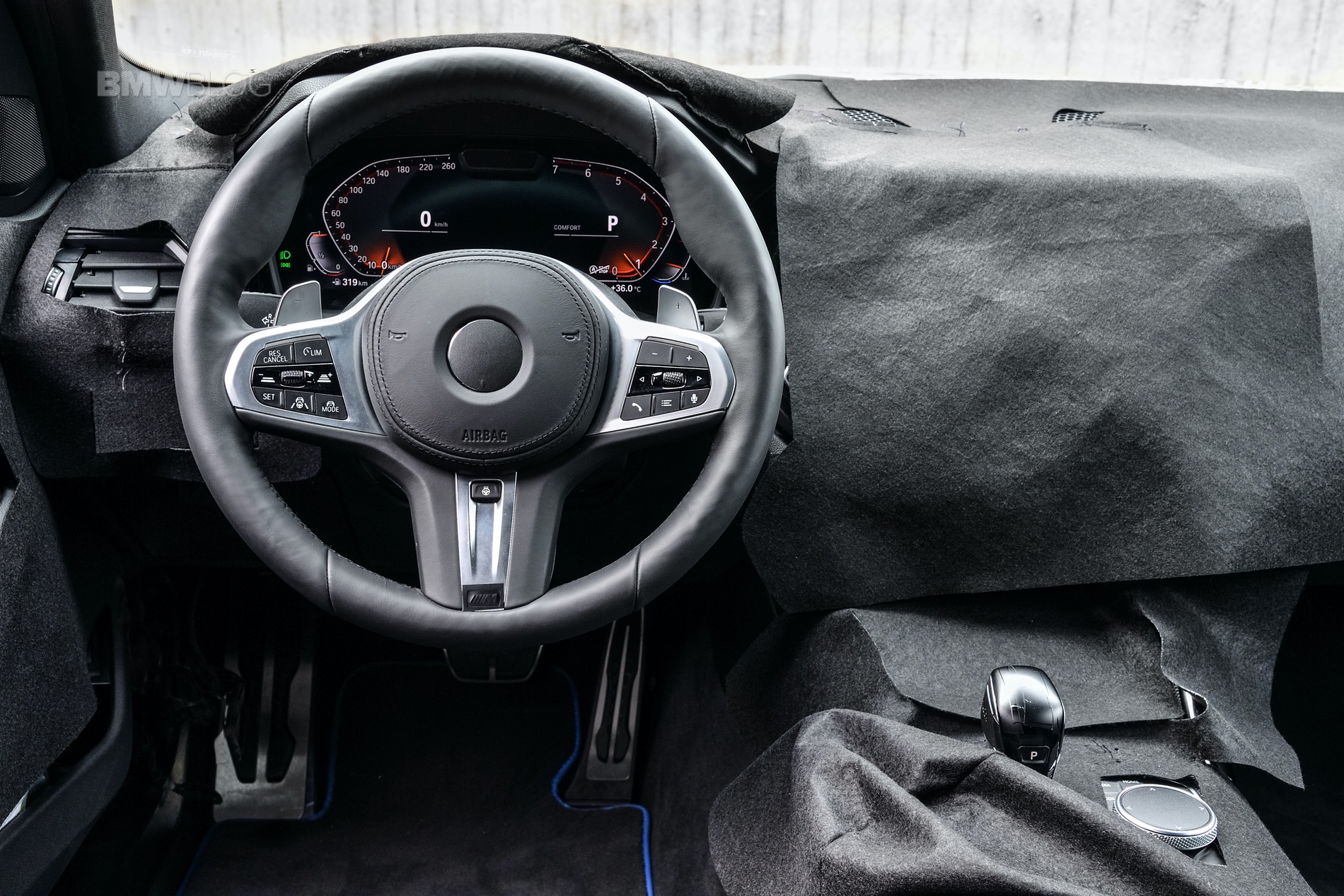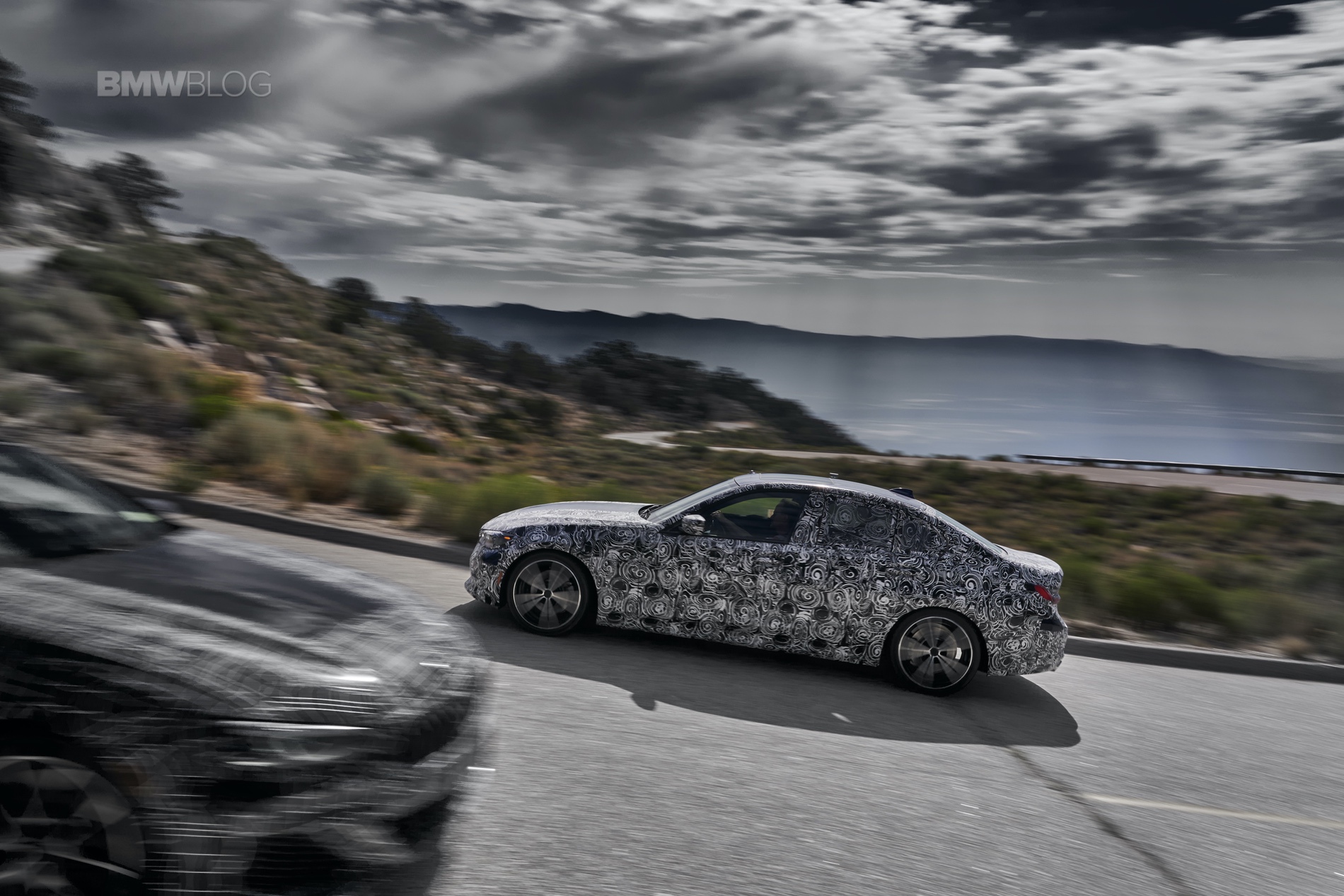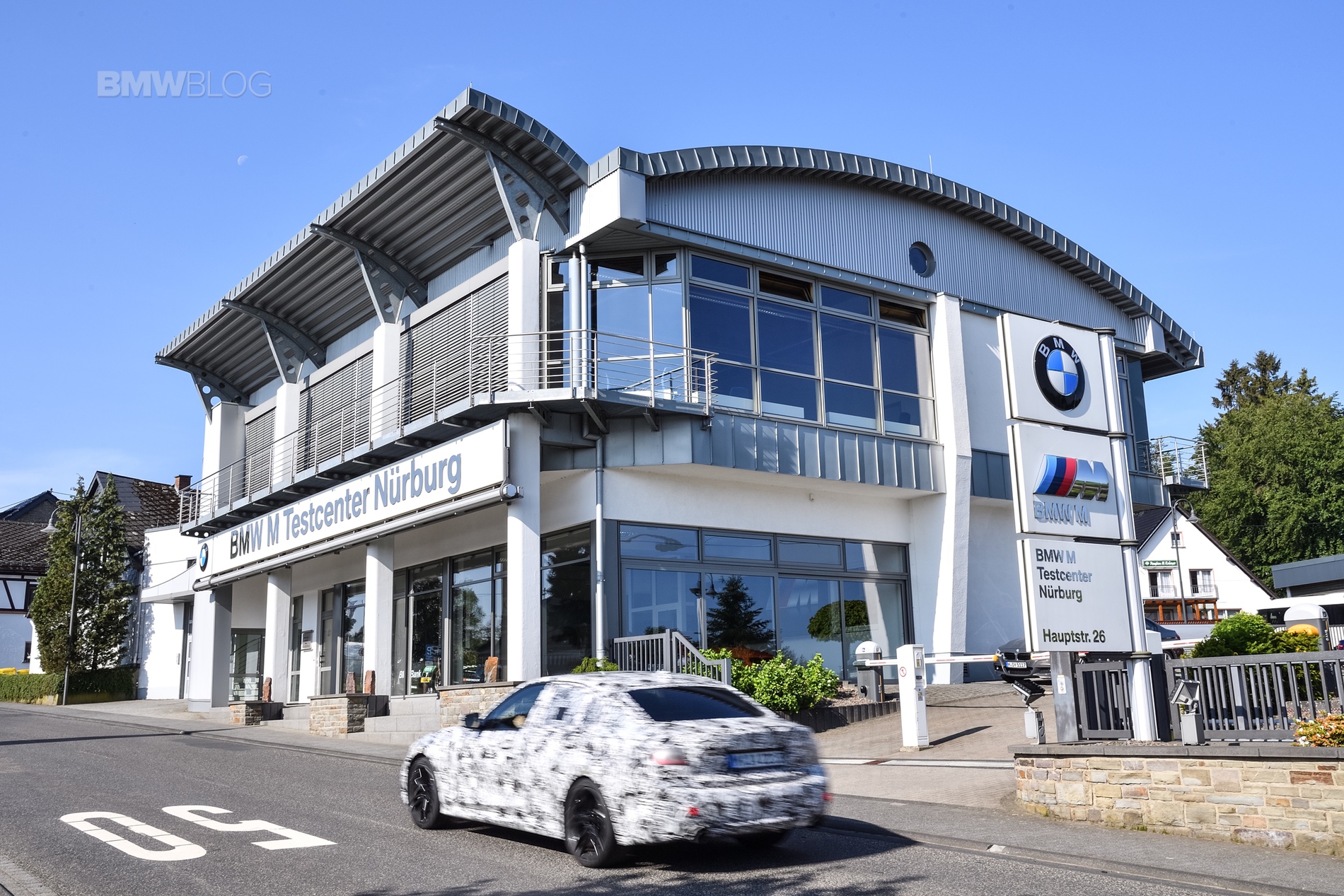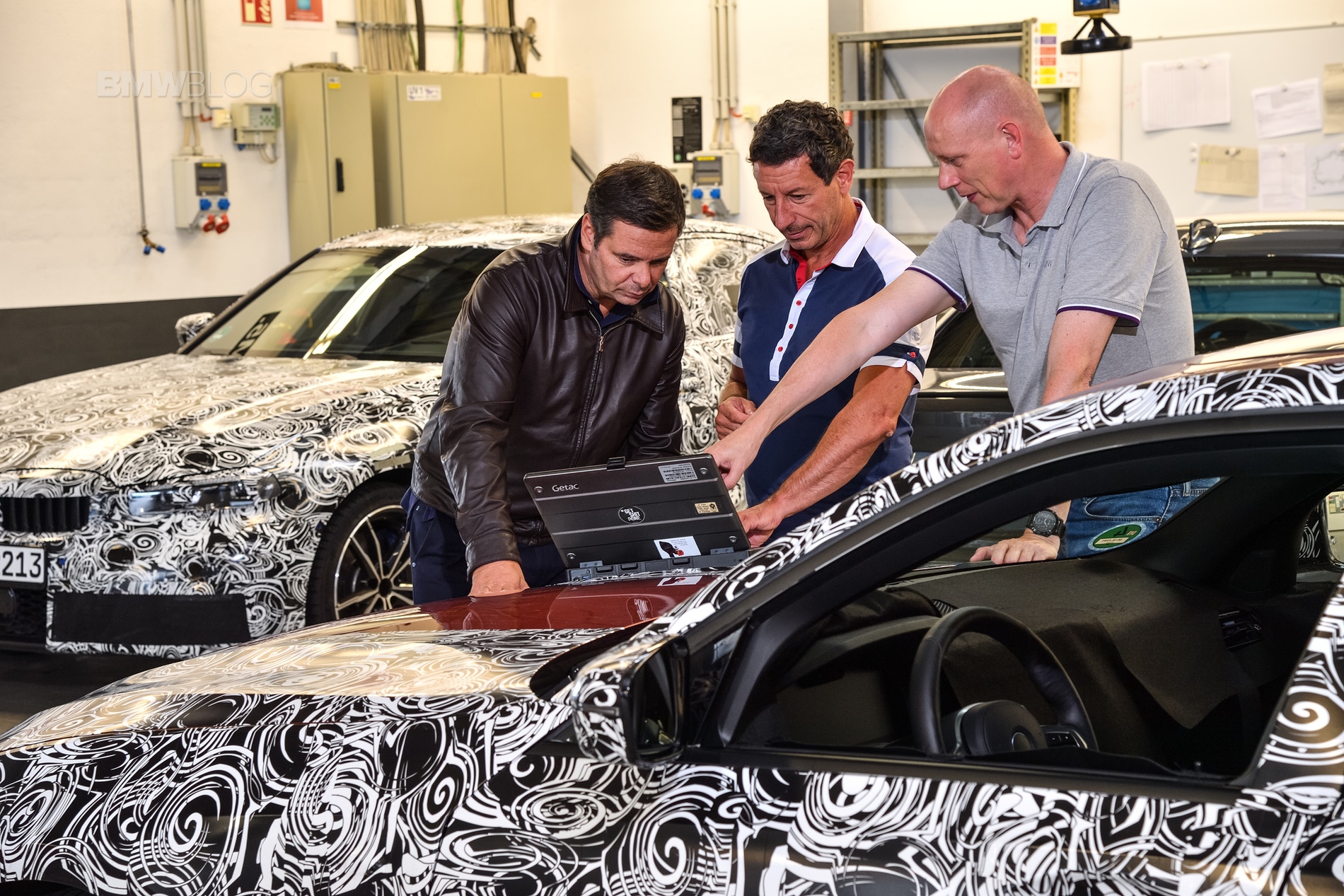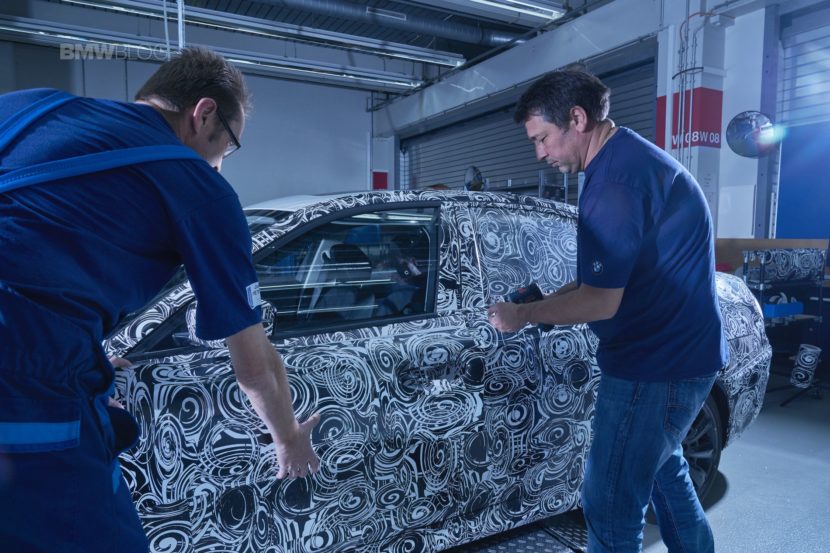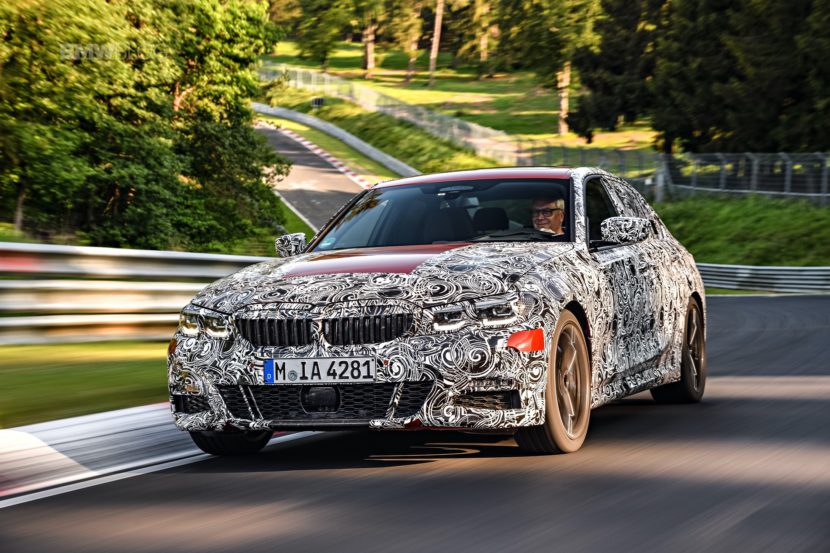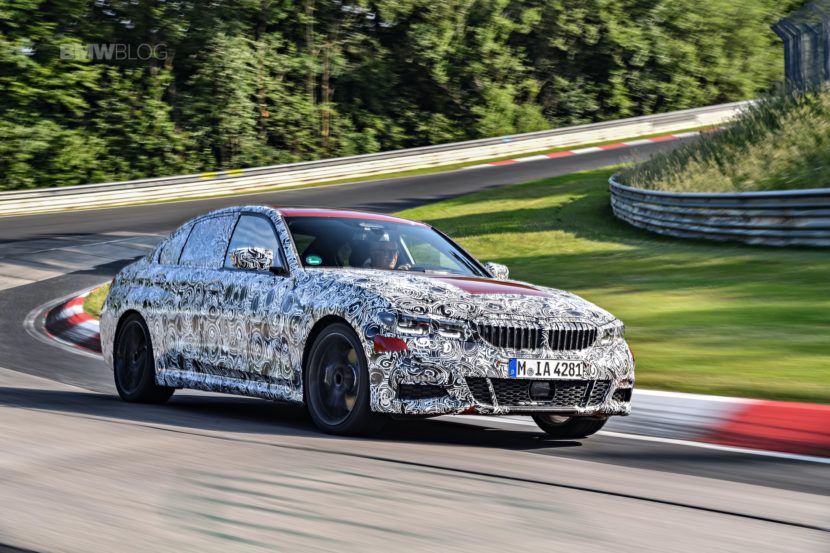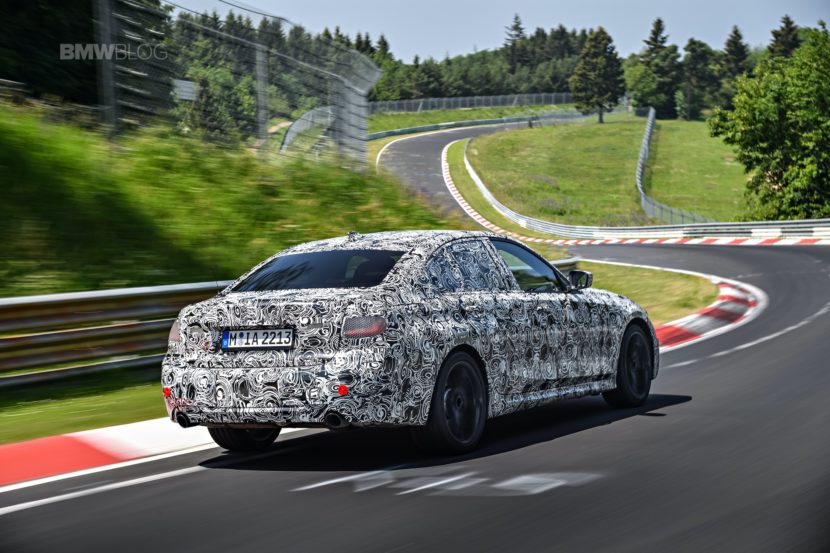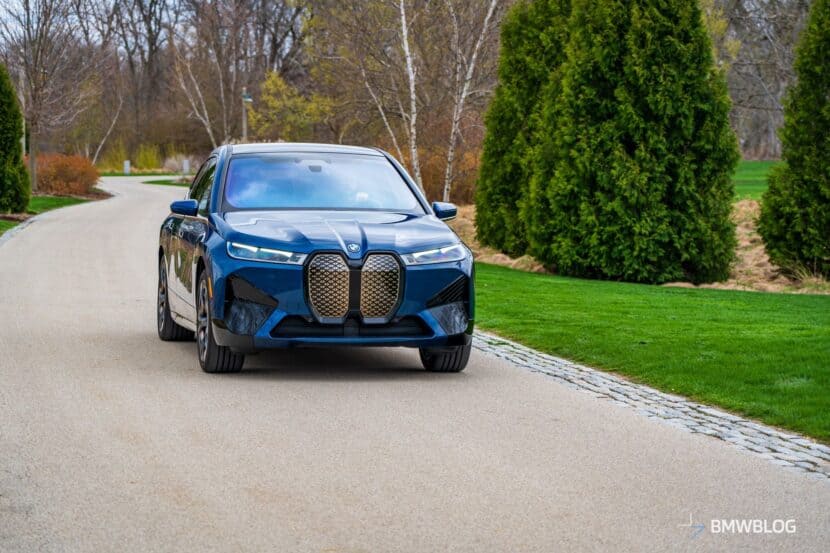Nearly three years of dynamic development testing. Mission accomplished: The 3 Series is ready!
20 months following the dynamic development of the car known for having the best road handling among the premium sedans and a final test at the Nurburgring track and the public roads in its surroundings have left us in a unique position to ensure that the new Series 3 is more than ready to re-dictate cards in the premium segment globally. After the Paris motor show reveal, it will be on sale next January.
Lutz Hahn wipes the sweat on his eyebrow in the hot August morning. The digital thermometer shoes 50 degrees Celsius inside the camouflaged 3 Series but in fact it’s much hotter in the Nevada desert (but the electronics on board this prototype car stop adding up at 50… after all we are three months away from start of production and this will be one of the minor final hiccups which will be solved by then.
Still, Mr. Hahn (head of BMW development at the Oxnard plant, north of Los Angeles) is under less pressure than the Series 3 of the impending G20 generation that is about to go through yet another tough shakedown test on the empty roads in this inhospitable desert where at this time of year mercury manages to stay close to 60 degrees Celsius during the day for a whole week.
This morning we drive to the Hoover Dam, the largest man-made lake in the United States that not only provides the necessary water to the gambling capital of the world but is also the source of the countless gigawatts that serve to illuminate the many thousands of neons which give Las Vegas its unique nocturnal appeal.
The plant’s powerful lines are ideal to subject the disguised 3 Series to rather demanding stress tests, as Dirk Hohmann, one of the main development engineers, tells me: “It’s hard to find an atmosphere with as many electricity waves in the world, although we do similar tests in Los Angeles and San Diego on the military facilities there by the ports”. After a break for drinks and some tire pressure and brakes condition checks, it’s time to restart the trip back to Las Vegas.
Whenever there is some kind of failure, minor or major, Hohmann presses a button in the upper right corner of the small display of the measuring device placed next to the transmission shift selector. As we drove right through Death Valley the transmission choked for a moment; it did not seem like a big deal but Hohmann immediately pressed the button on the minicomputer connected to the heavy electronic artillery installed in the boot. That is how location, time and conditions of the “incident” are recorded and this is absolutely vital to assure it will be fixed. The vehicle data itself is stored on a hard disk in the boot, then passed on to computers and analysed on a day-to-day basis, because most of the development work does not happen inside the cars, not even on road test days.
A little less than a year and a half before in the north of Munich, some 9000 km away from Nevada, the general picture was quite different. The head of the project, Thomas Baeumer, converged on a board with his team at the BMW Research and Innovation Center to study a dozen pages filled with diagrams hanging there. There were some long faces because the boss was upset that the speakers’ grilles did not fit in the space that was intended for them (only a few millimetres but enough to require a change in the docking angle and a redesigned lid… after all, building a new car from scratch is much more than accelerating and braking for thousands and thousands of testing miles).
The big digital clock hanging on the wall of the development center was where all eyes converged at in the beginning of each working day and Bauemer was no exception: “we placed it there at the start of this project to show how much time is left before the series production kick-off), “he explained quietly, because at the time that defining moment was still over two years down the road and even if there was some pressure, it could be easily managed. There were already some early running prototypes on public roads with much more dense camouflage so that the public (and especially the competition) did not immediately know that the successor to one of the most important BMW models was already being “cooked”.
In the lower floors of the basement floor of the BMW idea lab there are rooms that seem to have as many security layers as the White House. A green rotating door with special access codes and repeated camera control help create this “top secret” environment. This is the garage from which most of the 300 prototypes that run the four corners of the world exit (on circuits like Nurburgring, Munich, Miramas or for long sessions in the United States, Europe, China or Lapland in northern Europe for the mandatory ice tests). It is here that the small stickers are used to conceal as much as possible the body lines, the headlights, front grille, mirrors, etc., a work that requires two people full time during a day and that add about 10 kg of total weight to the car. Once the prototypes are fully “under cover” these wheeled laboratories are launched onto the roads on sacrifice missions for both vehicles and test teams so that once again the new Series 3 can live up to the high expectations when it is premiered at the Paris motor show on October the 2nd.
Lapping the “Green Inferno”
At the end of the long dynamic development stage the base settings for the new 330i were in place (which gains 8 ps and 50 Nm for new peaks at 265 ps and 400 Nm) which we came to drive on the mythical Nurburgring track (known as the “Green Hell”) where 73 corners spread along the demanding 20.83 km were in charge of leaving us with a precise idea of the dynamic valences of the new car. Albert Maier (engineer in charge of dynamic integration) explains that the front and rear track have been enlarged by 3 cm and that the car’s center of gravity was lowered by 1 cm, even if the ground clearance is pretty much the same. Aluminum is still used in the front axle cradle (as in the previous generation) but the torsional stiffness of the chassis has been increased by about 15%, but by as much as 50% in some specific points (“in terms of stiffness it is not just the overall figure that matters and actually some values at meaningful anchor points are even more relevant”.
For instance, in suspension tower mount or a suspension triangle achieving 50% more stiffness has enormous advantages in the overall chassis tuning, “Maier says). The new vehicle’s body went from 100% steel to combine steel with aluminum and ultra-high strength steels and this evolution was instrumental to drop some kilos despite the overall dimension increase: the new 3 Series grows 6 cm om length (to 4.69 meters), 2 cm of which between axles, the width was also slightly widened, while the overall height was maintained). The car’s weight has been reduced by up to 55 kg (depending on the version) but this reduction also contributed to the ultimate goal: “to improve the car enough to keep its non-official title of best sports sedan in the world implied a real effort also because this status needs to be safeguarded in view of the rivals progress, which is real, “admits Maier.
BMW technicians were fully aware that it would not be necessary to change much, but to improve some aspects. “With more powerful computers we were able to optimize the body’s stiffness through computerized models and not as we did before, with the car on top of out tools, in a static way. Now we evaluate all the elements that play a role in the vehicle’s dynamics and the entire functional chain, from tires to bushings, from suspension arms to cradles to axles, bodywork, etc”, explains Robert Rothmiller, engineer in charge of functional design and integration of driving dynamics.
Rothmiller is crystal clear on some basic vectors that the project followed: “We never thought about using a directional rear axle because the car is already very agile with the body stiffness increase that comes from the new CLAR platform CLAR. On the other hand, to go from rear wheel drive to front or all-wheel drive would be a betrayal to the 3 Series character that historically has made this car what it is”. With this backdrop I enter the track with no pretension to learn it (not only it is too long but also the pouring rain did not help) but to understand the vehicle’s handling with the help of my travel partner Jos van As, head of dynamic development of any new BMW car. Progress is obvious as the doors are closed and the first transverse efforts immediately create an excellent perception of the body integrity, also taking into account these are pre-pre-series production vehicles. Second, the brake pedal has a very hard feel, almost like a racing car, “because the prototypes used in this conformity test use Sport brakes (with discs that combine center aluminum and steel rotors) and as, for the first time, did not just optimize the brake itself but the entire braking system as a whole”, smiles the Dutchman who is specialized in everything that moves on wheels at BMW.
Discs are bigger, the servo-brakes are more powerful and as a result some extra brake pressure is really needed on the pedal but rewarding you with and an immediately felt braking power. The advantage of these Sports brakes is that their durability is greater and so is fade resistance as well, whereas overall performance is considerably sportier.
Nurburging’s tarmac is not exactly as regular as a snooker table cloth but still the 330i I have in hands (and that responds vigorously just above 1500 rpm, taking then advantage of the well staggered excellent 8 speed automatic gearbox) is fit with a suspension which is absolutely convincing. It uses a MacPherson strut in the front and an independent multilink (five) rear axle, just as before and it even looks pretty much the same, but the German engineers explain that everything has been redesigned. The run flat tires in the past were uncomfortable and noisy and gradually the evolution has been great, being difficult to distinguish from “conventional” tires (I’m told that the rolling noise is about 8% lower now). “And this can be clearly seen here with this challenging configuration combining 19″ wheels with stiffer and lower sports suspension”, reinforces Van As.
For the first time the 3 Series using a lower suspension setting have specific elastocinematics, different from the standard regulation: “Typically we had a 12% increase in the stiffness of the normal springs compared to those of the sports version, but they are now 24% harder without adversely affecting comfort and this was only possible because we are debuting a new type – both in BMW and on the market – of shock absorber”, adds Van as his facial expression becomes more serious. Later, in the pits, I am shown several diagrams explaining the system: in the front there is an hydraulic rebound system that uses an additional cone inside the damper and that even with a vertical wheel movement of just 20 mm provides an additional damping force as it absorbs the energy and contributes to a superior roll control of the body; in the rear we have almost the opposite, i.e. a compression stop, a damper which is 2.5 cm longer, a piston mounted under the piston valves and a smaller additional cone at the rear of the damper increasing the damping capacity up to 50%. It is standard on all standard and Sport chassis but with different settings (stabilizer bars, stiffness, etc.) except for the Adaptive M Suspension, where the same effect is achieved just with the electronic damping action.
Also new is the electronic self-locking M differential, available as an option (previously there wasn’t even a mechanic one). It’s the same the new X4 uses and it makes it possible to gain a lot of agility, stability and even comfort, plus of course ensuring much more fun behind the wheel by helping to raise traction/grip when you want to drive at a really fast pace or on slippery roads, or both conditions together, as in this case. The 3 Series steering could still be considered the benchmark in this sedan segment but yet again it has stepped up its game: in the standard fixed ratio version it is slightly more direct than in the predecessor and in the variable ratio version it is slightly more direct as well, but with a softer overall response. Part of the improvement also has to do with the aforementioned increase in stiffness in key anchor points and with the fact that the rear axle has been designed to be more neutral with slightly increased toe and camber angles.
Outside this very exclusive participation in the birth process of the new Series 3 we were able to find out some information about the future range that will go on sale in the beginning of 2019. On the petrol side there will be the 318i (1.5 liters, 3 cylinders, 140 ps, 4 ps more than before), the 320i (2 liters, 4 cylinders, 190 ps, up 6 ps) and the 330i (same base engine as the 320, but producing 260 ps, 8 ps and 50 Nm more than previously). We move onto M territory (either M Performance or Pure M) to welcome the M340i (370 ps) and the highly anticipated new M3 with 48-volt technology, and an electric motor sandwiched between the gearbox and the 3-liter 6-cylinder in-line engine (the same as the current X3 M), to achieve a peak power of 460 ps. And as we mentioned electric power two plug-in hybrids 3-Series will most likely make their way into the market: the 325e with 150 ps from the 1.5-liter petrol engine working together with a 110 ps motor (the same powertrain of the Mini Countryman Plug-in) and a 330e which combines the 2 liter turbo engine with an electric motor for total output of 280 ps. And it is expected that both will be able to use the wireless charging system that – finally – is about to be released in the market, most likely with the 530e still before the end of 2018.
Finally, the range will gain some extra cachet with the i4, the electric 3 Series anticipated by the Vision Dynamics concept (2017 Frankfurt motor show), with the alluring promise of a 435 km mile driving range.
Joaquim Oliveira/Press-Inform



